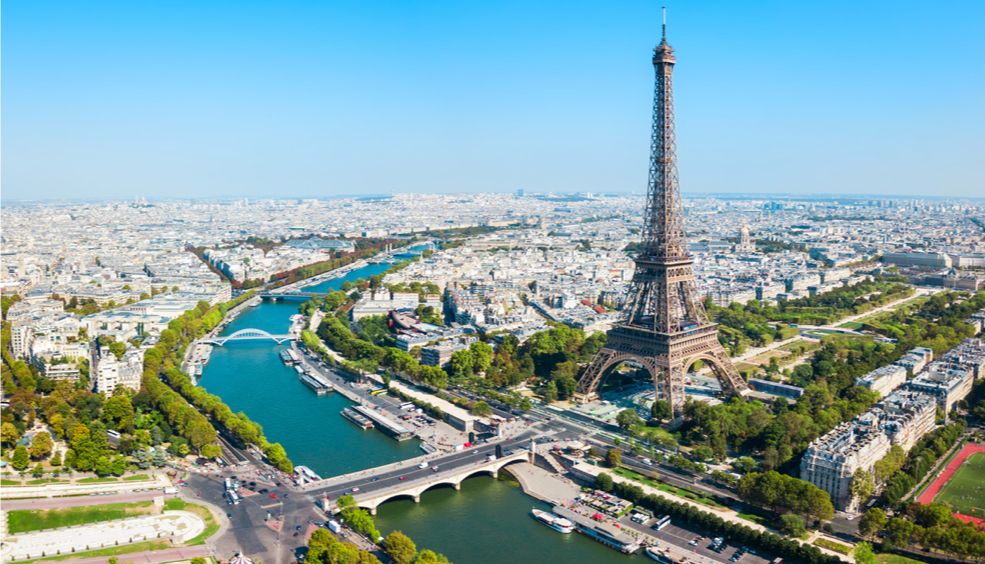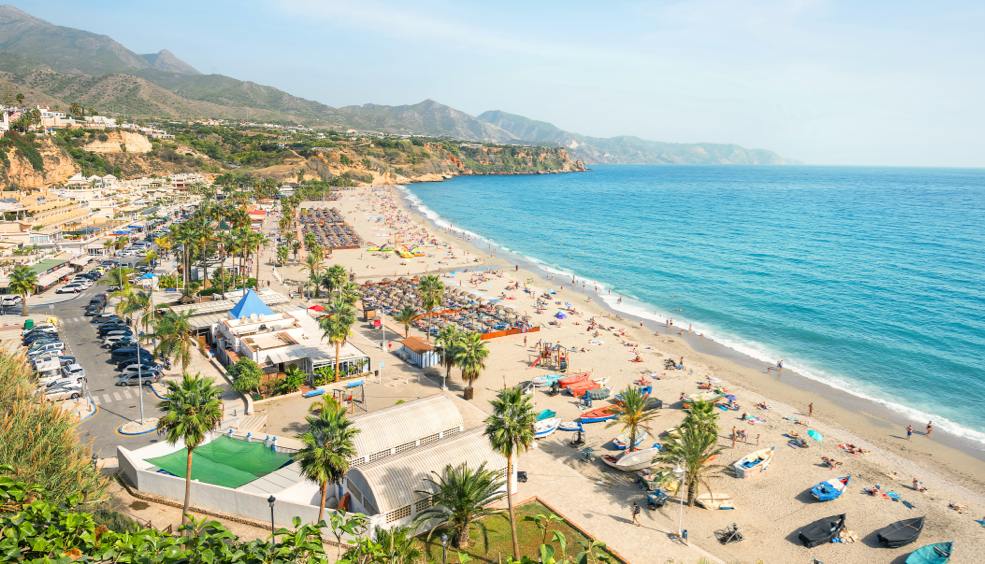These are Vueling’s new routes to Paris-Orly
New routes connecting Paris with Spain, Italy, UK, Denmark, Germany, Norway, Sweden, Ireland, Morocco and Malta, since November 2021.
more infoTop winter destinations
There are places that are perfect this time of year because of their pleasant climate and great prices, and because they are quieter than in summer. If you fancy a getaway over the next few months, these are the winter destinations to look out for:
more infoThe Imprint of Miró in Palma de Mallorca
One of the things that struck us most about Palma is the marked presence of art, and not only in art galleries. We saw sculptures scattered about everywhere so, take note – when you’re strolling around streets and parks, you’re likely to bump into works by such renowned artists as Chillida (at the end of the Rambla), Calder (S’Hort del Rei) or Oppenheim (his “Upside Down Church”, located in the Porta de Santa Catalina, is amazing).
But, king of them all, as far as art is concerned, is undoubtedly Joan Miró. The Catalan artist had strong ties to Palma. He spent the last 27 years of his life on the island of Majorca, where he produced one third of his entire oeuvre. Indeed, you can still feel his presence in Palma, 34 years after his death. And, in many instances, we came across creations of his incorporated into modern architectural ensembles, as in Es Baluard, The Pilar i Joan Miró Foundation and the Parc de la Mar. We spent a weekend in Palma, hot on the heels of Miró and, truth be told, we were fascinated by his vast production, still very much in evidence in the Balearic capital.
Miró – Over 50K Followers A Year
When it comes to this great artist, the paramount landmark here is clearly the Pilar i Joan Miró Foundation, which receives more than fifty thousand visitors each year. The venue is unique in that you feel enveloped by Joan Miró’s creative atmosphere, set up by the exhibits, workshops and a natural environment full of inspiration. Miró will also go down in history for his collaborative endeavours with such eminent architects as Josep Lluís Sert, a member of the second generation of architects in the so-called Modern Catalan Movement. Miró coincided with the exiled Sert in Paris after the Spanish Civil War. In 1956, he settled in Majorca, specifically at Son Abrines, where he was fortunate enough to have a magnificent studio designed by his good friend, Sert. The current Foundation building was designed by Rafael Moneo.
The other venue where visitors can enjoy the work of this artistic genius is Es Baluard, Palma’s Museum of Modern and Contemporary Art. On display there are works by the leading artists and movements that converged – and continue to do so – in the Balearic Islands, from the beginning of the 20th century until the present. Their offerings are exhibited in relation to other domestic and international art contexts.
The building, designed by Lluís García-Ruiz, Jaume García-Ruiz, Vicente Tomás and Angel Sánchez Cantalejo, is set on three floors which interact with one another, as well as with the exterior and the city walls, by means of ramps, skylights and large interior balconies, articulated by way of an indoor street complex. But, what most caught our eye was the way the exterior spaces are conceptualised as exhibition areas and walkways via a spectacular path leading along the walled perimeter. The large cistern has also been retained as both an exhibition space and an area for staging activities.
Miró Takes the Laurels in Palma
However, Miró’s presence goes further still. On a stroll through Palma you may come across three creations by the master of the avant-gardes – two sculptures (one on the Avenida Jaume III, near Passeig Mallorca, and the other at the foot of the Royal Palace of the Almudaina) and a mosaic (Parc del Mar). You can also admire two of his works in the Juan March Museum Foundation, namely “Peinture (Femme, Tige, Coeur)” and “Le Perroquet”, both from the interwar period. The Museum is a must-visit if you’re eager to take the pulse of contemporary Spanish art, and is located in an amazing 17th-century palace at number 11 Calle Sant Miquel. Lastly, just 200 metres away stands the Hotel Joan Miró, the only hotel themed around the celebrated contemporary artist, with its rooms and other areas inspired by his work. It also boasts 28 original works by Joan Miró displayed at different spots around the hotel.
Creativity Spreading To Other Disciplines
The omnipresence of art in the city means creativity tends to be everywhere. Even in holy sites, as in the Cathedral, adorned as it is by the creations of modern and contemporary artists, notably Gaudí (Modernist baldachin and pulpit) and Barceló (Chapel of the Most Holy). Design wins out handsomely from this creative urge – a host of studios have sprung up throughout the historic centre, and hotels, too, have jumped on the bandwagon. We can recommend the Nakar Hotel, a member of the select international network of Design Hotels, located on Avenida Jaume III, the city’s major shopping hub, and very near Passeig Mallorca, a strategic area on account of its proximity to the Santa Catalina quarter. Its interior concept and design is the work of Majorcan designer Marta Rotger, who opted for a sober, rationalistic style in its lines and forms. The hotel’s other claim to fame is its CUIT Restaurant, located on the 8th floor, affording spectacular views over all of Palma de Mallorca. And the food is divine, too! Their chef, Miguel Calent, is running on a high and his creations are based on the Majorcan culinary tradition with Mediterranean influences, filtered – we might add – by renewal.
Gear up and steep yourself in the brilliant universe of Joan Miró in Palma de Mallorca. Check out our flights here.
Text and images by Los Viajes de ISABELYLUIS
more infoNew routes from London to Spain with Vueling
Gatwick Airport now has direct flights to Malaga (Costa del Sol, Andalusia), Seville (Andalusia), Granada (Andalusia), Almería (Andalusia), Cádiz (Jerez, Andalusia), Menorca (Balearic Islands), Oviedo (Asturias) and A Coruña (Galicia).
more info




